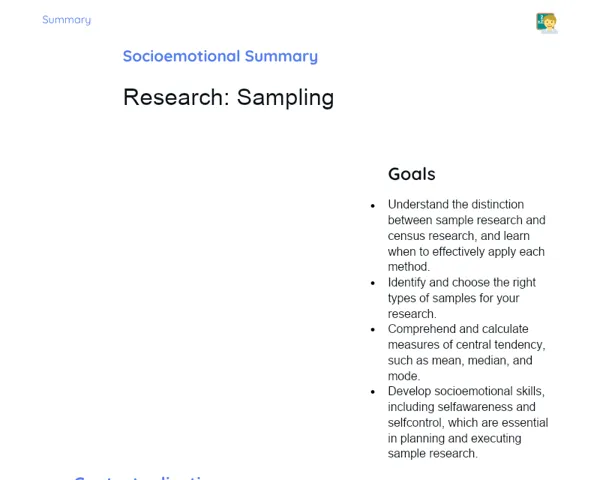Objectives
1. 🎯 Get a grip on the essential operations with matrices: addition, subtraction, and multiplication.
2. 🎯 Recognize and apply the specific conditions necessary for each of these operations.
3. 🎯 Enhance critical and logical reasoning skills to tackle practical and theoretical problems using these concepts.
Contextualization
Did you know that matrices are not just abstract symbols? They play a crucial role in today's technology, especially in computing. For instance, they are used in processing images, simulating physical phenomena, and much more. In computer graphics, every pixel on a screen is manipulated by matrix operations that define its color, brightness, and position. This manipulation allows us to create engaging virtual environments. By mastering matrix operations, you're not just boosting your math skills; you're also gaining insights into how the technological world around us operates.
Important Topics
Matrix Addition
Matrix addition is a basic operation where the corresponding elements of two matrices of the same dimension are summed up. This operation is handy when we need to merge information from similar matrices to form a new dataset. For example, in programming, matrix addition can be employed to amalgamate data from various sensors in a robot, enhancing decision-making based on multiple data sources.
-
Both matrices must have the same number of rows and columns for addition to be performed.
-
Each element in the resulting matrix comes from summing up the corresponding elements of the input matrices.
-
The addition operation is commutative, meaning the order in which you add them doesn’t change the result.
Matrix Subtraction
Matrix subtraction operates on similar principles to addition, involving the subtraction of corresponding elements. It proves useful for assessing the discrepancies between two datasets represented as matrices. For instance, in weather forecasting, matrix subtraction could be employed to compare models and refine the final predictions.
-
The matrices must maintain the same dimensions.
-
Each resulting matrix element is derived by subtracting corresponding elements of the input matrices.
-
Matrix subtraction is not commutative; the order of matrices affects the result.
Matrix Multiplication
Matrix multiplication is a more intricate operation that blends elements from a row of one matrix with the corresponding column from the other matrix. This operation results in a new matrix with dimensions determined by the original matrices. Matrix multiplication is vital in linear transformations applications, particularly in engineering and physics, where it helps solve systems of equations and model natural phenomena.
-
The number of columns in the first matrix must equal the number of rows in the second matrix.
-
Each element in the resulting matrix is the sum of the products of the row elements from the first matrix and the corresponding column elements from the second matrix.
-
Matrix multiplication is not commutative; the arrangement of matrices is significant.
Key Terms
-
Matrix: A rectangular arrangement of numbers, symbols, or expressions organized in rows and columns.
-
Element of a Matrix: A specific number located at a definite position within a matrix, identified by row and column indices.
-
Dimension of a Matrix: The count of rows and columns in a matrix, expressed as 'm x n', where 'm' indicates rows and 'n' indicates columns.
For Reflection
-
In what real-world scenarios could matrix addition help in consolidating various information sources?
-
Where can matrix subtraction play a role in improving processes or aiding in better decision-making?
-
What makes matrix multiplication indispensable in domains like engineering and physics? Provide instances of practical applications.
Important Conclusions
-
We have successfully navigated the essential matrix operations: addition, subtraction, and multiplication. These operations are not merely theoretical exercises; they serve as crucial tools in technology, science, and engineering.
-
We've highlighted the necessity of adhering to specific operational rules, such as matching the numbers of rows and columns.
-
Practical applications discussed illustrate how matrix mathematics can solve real-world challenges, from optimizing delivery routes to processing images in computer graphics.
To Exercise Knowledge
- Develop a simple computer program that uses matrices to simulate a basic strategy game. For instance, you could represent a game board in a matrix, using matrix operations for moving 'pieces' and checking for wins. 2. Write a brief report on the utilization of matrices in a chosen field (like biology, economics, or music) and present some practical examples. 3. Tackle a set of math problems involving matrices, such as systems of linear equations encoded by matrices, and discuss the methods and solutions employed.
Challenge
Matrix Detective Challenge: Using matrices, attempt to decode a message encoded by a peer. The message should be presented as a matrix of numbers that you need to decipher through matrix operations. Share your solution and method in a brief video, explaining each step of your decoding process.
Study Tips
-
Regular practice with matrix problems keeps your skills honed. Online math resources can offer a variety of exercises across different levels of difficulty.
-
Visualizing matrices and operations as transformations in a geometric space can enhance understanding of matrix operation implications.
-
Form study groups with your peers to discuss and solve matrix-related problems. Teaching one another is an effective way to solidify your learning.



